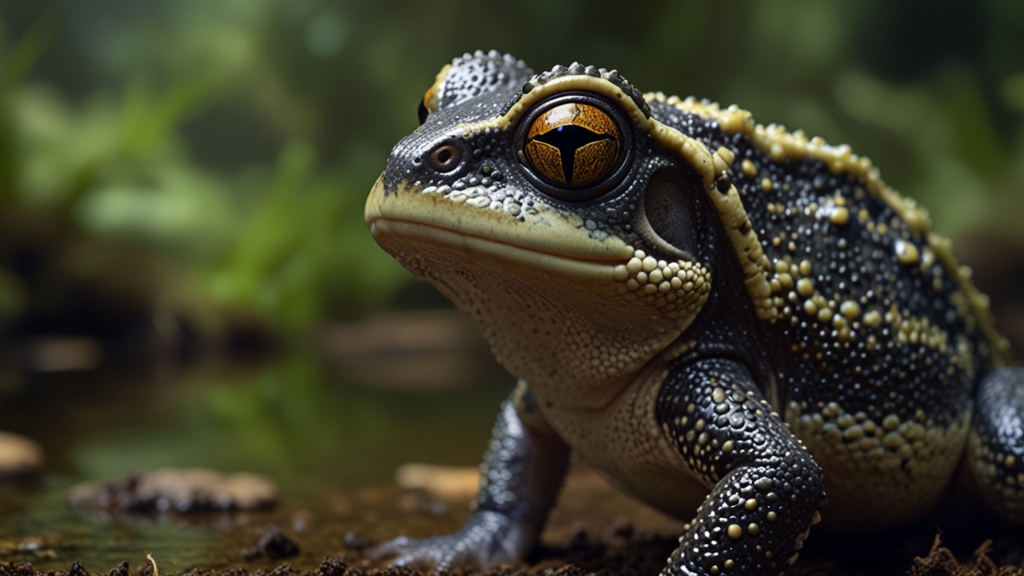The Unseen Dangers Facing Our Planet's Amphibian Population
Amphibians, a unique group of vertebrates including frogs, toads, salamanders, and newts, are incredibly sensitive indicators of environmental health. Often referred to as "canaries in the coal mine," their declining numbers serve as a stark warning. Unfortunately, the dangers facing these remarkable creatures are numerous, and many go unseen by the general populace.
Habitat Destruction and Fragmentation
One of the most critical threats to amphibian populations is habitat destruction. Wetlands, forests, and other natural habitats where amphibians thrive are being rapidly converted into agricultural land, urban areas, and industrial sites. The loss of these vital ecosystems not only reduces available living spaces for amphibians but also fragments populations, making it difficult for them to find mates and leading to a loss of genetic diversity.
Fragmentation also creates barriers that inhibit the movement of amphibians, preventing them from migrating to more suitable habitats. This isolation can result in inbreeding, which makes populations more susceptible to diseases and environmental changes.
Pollution and Contaminants
Amphibians have permeable skin that allows them to absorb water and other substances directly from their environment. While this adaptation helps them survive in various habitats, it also makes them particularly vulnerable to pollutants and contaminants. Pesticides, industrial chemicals, heavy metals, and even pharmaceuticals found in water sources can cause severe health issues for amphibians, including developmental problems, reproductive failures, and weakening of their immune systems.
"The fate of amphibians should serve as a warning to us all. Their decline is a clear indication that our environmental practices are unsustainable." – Dr. Jane Goodall
Climate Change
Climate change poses yet another significant threat to amphibian populations. Rising temperatures, altered precipitation patterns, and increased frequency of extreme weather events affect the delicate balance of the ecosystems that amphibians depend on. For instance, many amphibians rely on specific temperature and moisture conditions for breeding. Changes in these conditions can disrupt their reproductive cycles, leading to reduced population sizes.
Moreover, climate change can exacerbate the spread of diseases and invasive species, further stressing amphibian populations. For instance, the chytrid fungus, a deadly pathogen to many amphibian species, has been linked to changing environmental conditions.
Invasive Species and Diseases
Invasive species, often introduced by human activity, can wreak havoc on native amphibian populations. Predatory species such as fish and bullfrogs can severely reduce amphibian numbers by preying on eggs, larvae, and adults. Invasive plants can also alter habitats, making them unsuitable for native amphibians.
Additionally, amphibians are highly susceptible to diseases such as ranavirus and the aforementioned chytrid fungus. These pathogens can cause massive die-offs, with some species experiencing declines of over 90%. The spread of such diseases is often facilitated by human activities like global trade and travel, which can inadvertently transport pathogens across continents.
"Addressing the threats facing amphibians requires a holistic approach. Conservation efforts, stricter regulations on pollutants, and public awareness are crucial." – Sir David Attenborough
Conservation Efforts and Hope
Despite the grim outlook, there is hope for amphibians. Conservation efforts worldwide are working to protect habitats, reduce pollution, and control invasive species. Initiatives such as creating amphibian corridors to connect fragmented habitats, captive breeding and reintroduction programs, and research into disease resistance are all contributing to the survival of these vital creatures.
Public awareness and education are also essential. By understanding the challenges faced by amphibians, individuals can take steps to reduce their impact, such as minimizing pesticide use, supporting sustainable practices, and advocating for stronger environmental protections.
The unseen dangers facing our planet's amphibian population are multifaceted and challenging to address, but with concerted effort and global cooperation, we can help ensure that these fascinating creatures continue to thrive for generations to come.
"Amphibians are an irreplaceable part of our planet's biological diversity. Their survival is intertwined with the health of our ecosystems and, ultimately, our own well-being." – Sylvia Earle









